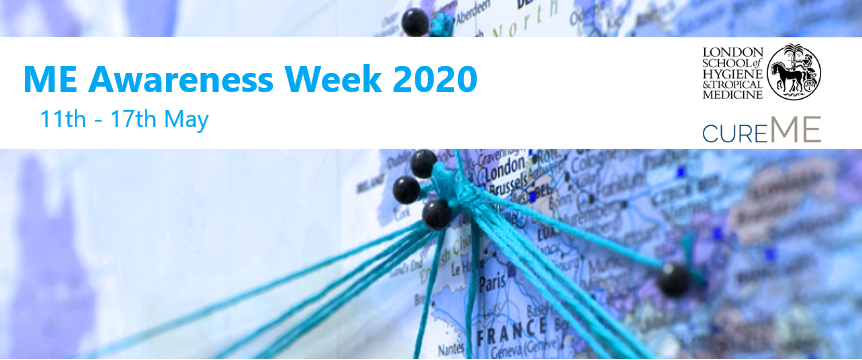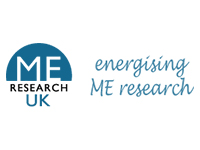Caroline’s Story: My Experience with ME and COVID-19

One of the difficulties in suffering from ME is that it is hard to know when you are suffering from a flare-up in symptoms or when you have actually caught a virus, since some of the distinguishing features of coronaviruses, especially influenza, are akin to cardinal ME symptoms. Therefore, when I first started suffering from mild viral symptoms on 13th March, I was unsure what was wrong.
I had already had a very sore throat, dry cough and the most severe cold I had ever had around a month before, however it passed completely within a few days. My experience with suspected COVID-19 was very different. Once again, I had a sore throat but this time it was very mild, more like a dry throat when you haven’t drunk enough water. I also had a tight feeling in my chest which I would describe as uncomfortable at this point, rather than painful. Over the next couple of days, I continued to have these mild symptoms, with an on/off sensation of heat in my face and my chest, whilst the rest of my body felt normal or even cool. At one point, I remember getting in bed as I felt chilly with cold feet and hands but my temperature uneven across my body. When I took my temperature, it registered as slightly below the normal range, however my body temperature is usually well below the normal range, often below 37 degrees.
Other people have described how their experience with COVID-19 was either immediate and acute or lengthier and fluctuating. In my case, it was the latter. After a weekend suffering from the mild symptoms detailed above, I was then free of any of these symptoms for several days. Seven days after the onset, I had a very severe migraine, was unable to eat and vomited several times when I attempted to. I did not put this down to having the virus, since I had been suffering from one unexplained very severe migraine with vomiting every four weeks for the last six months.
However, on the eighth day, which was when lockdown was officially begun with the closure of schools, the feeling of tightness in my chest returned. I had a very hot chest which was burning to the touch and a sore throat. This was the first day that my appetite was affected without suffering from a migraine. I craved a lot of liquid and mainly ate fruit (particularly apples) and vegetables, as I did not have an appetite for heavier foods and, unusually, did not wish to drink caffeinated drinks which I regularly rely on to get me started in the morning.
Since at this point in time, the UK Government had not officially declared many confirmed cases, I thought it was unlikely that I had the virus and put my symptoms down to ME and perhaps additional anxiety due to the circumstances surrounding the pandemic. Nonetheless, I contacted NHS 111 and described that I did not have an overall temperature, just heat around the chest area and face, plus the sore throat. I was told that this was likely to be the virus and to self-isolate for seven days, to drink plenty of water and to take painkillers as required, avoiding ibuprofen. If my chest discomfort became more severe or I had difficulty breathing, I was told that I should contact the service again.
On the ninth day, I began suffering from chest pain as well as tightness and this also affected my upper back, in between the ribs. It would hurt to deeply inhale. The best way I can describe this symptom is a stabbing pain, affecting me in between the ribs front and back and especially at night. However, other than this symptom, I felt remarkably much more well than I normally do. Usually I struggle to get out of bed, it takes me several hours after waking to be active and I do not rise before 10.00am. However, I was waking alert at 8.00am, able to get out of bed and complete physical activities straight away, such as weeding and watering in my garden. One day I cut all around my flower beds with loppers and without suffering Post Exertional Malaise. However, as the chest tightness increased (at some points feeling as if someone was tightening belts around my chest) I remained vigilant to any deterioration. At this point, I had a friend in the ICU at St Thomas’ Hospital in London with confirmed COVID-19, so I took the condition seriously. He was able to communicate by phone and recommended inhaling steam to keep the lungs free from infection. I did this with a towel, over a bowl of steaming water several times a day. I also took plenty of vitamin C and kept drinking hot uncaffeinated drinks such as marigold tea, alongside my regular supplements to assist immune function.
Seven days after contacting the NHS 111 and receiving a phone diagnosis, the sore throat and chest tightness disappeared and my appetite returned to craving regular foods. However, this is when an abnormal level of fatigue as well as paraesthesia began to affect me. Very suddenly these symptoms began, with the fatigue particularly bad in the morning and the numbness as well as joint pain/ tingling in my fingers, feet and knees happening mainly at night. Muscle pain, which I get regularly, was much worse. Getting out of bed was usually difficult, however it was akin to hauling myself out of a trench! These are symptoms I suffered from after a prolonged relapse when I caught a virus three years previously, improving only when the weather became a lot hotter. For this reason, I spent most of my time just sitting or lying outside in the sunshine, as we were blessed in April with unseasonably warm, bright and sunny weather.
It is now seven weeks since I first had symptoms of COVID-19 and I believe that I am on the mend. I am no longer waking with numb hands or fingers or feet, although my extremities do go numb easily at the moment if using them a lot, for example by holding the phone too long as happened yesterday. My fatigue has returned to pre-COVID 19 levels. I am regarded as suffering from mild-moderate ME. I have remained housebound during the pandemic, limiting myself to the garden and going outside only on two occasions with a mask, at hours when hardly anyone else was around.







